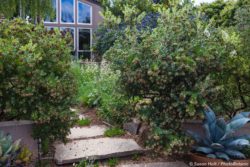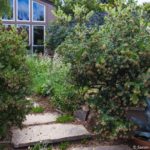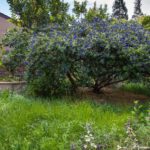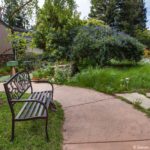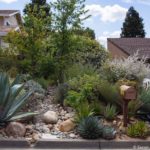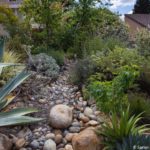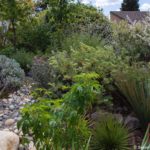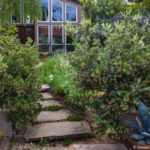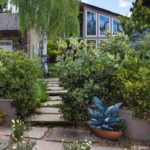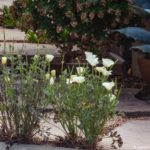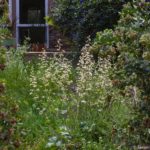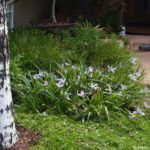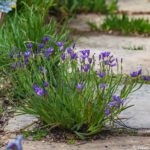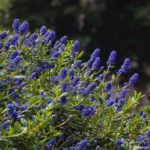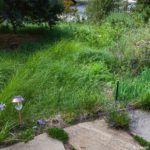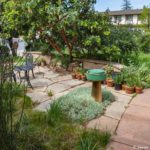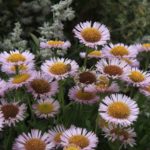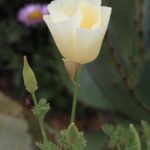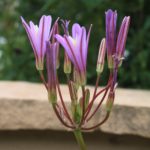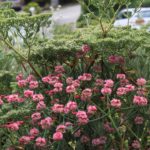Lot size: 4,000 sq. ft. front garden, 75% native
Garden Age: Garden was installed in stages, beginning in 2014
Years on the Bringing Back the Natives Garden Tour:
Showcase FeatureEd, a long-time Tour attendee and volunteer, was inspired by the Tour and ecologist Doug Tallamy to create a haven for wildlife in his garden—and did he! Ed’s front garden, once planted with junipers and the traditional resource- and time-consuming lawn, is now an inviting meadow, containing a delightful potpourri of lush native sedges, bulbs,, and perennials that attract wildlife. In the wide planting strip separating their driveways Ed and his neighbor comingled their properties to create an exquisite garden with layers of oaks, manzanitas, buckwheats, and sages. On the fence about converting your lawn into a garden? If so, this garden, designed and installed by Ed, is a must-see; you’ll be convinced that gardening for wildlife with California native plants is the way to go!
Other Garden Attractions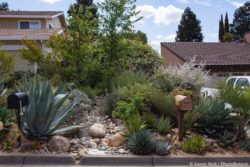
• More than twenty species of manzanita, thirteen of California lilac, and ten types of buckwheats are in the garden.
• The meadow contains a variety of native grasses, large-flowering bulbs, and flowering perennials.
• Rainwater is collected from the roofs and released into the garden through perforated pipes and a redirected sump pump; this keeps the garden green longer, replenishes the groundwater, and helps to keep the local creek from scouring.
Gardening for Wildlife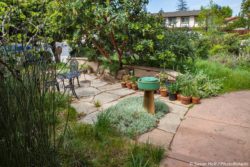
This garden attracts Anna’s and Allen’s hummingbirds, songbirds, and raptors, who eye the action from above. Bumble, cuckoo, and carpenter bees, the beautiful, diminutive metallic green sweat bee, honeybees, and more, delight in the pollen and nectar provided for them. Anise swallowtail butterflies lay their eggs on the yampah; monarchs lay theirs on the milkweed, and pipevine swallowtail caterpillars nestle into the native pipevine. Salamanders dwell in shady areas; lizards bask in the sun, California toads and the occasional garter snake see refuge in the meadow.
Green Home Features
Ed and his wife installed 20 solar panels in 2009; since then they have generated 82,000 kilowatt hours of energy, and prevented 139,000 lbs. of carbon dioxide from going into the air. As the solar panels paid themselves off in 7 years, since 2016 they have made a big dent in the Ellebracht’s PG&E bill.
Garden Talks
11:00 “Why keystone natives?” or, “How to include beautiful native plants that attract birds, bees, and butterflies in your garden” by Ed Ellebracht
Video of Ed’s garden
“Native meadow & keeping rainwater on-site” by Ed Ellebracht


